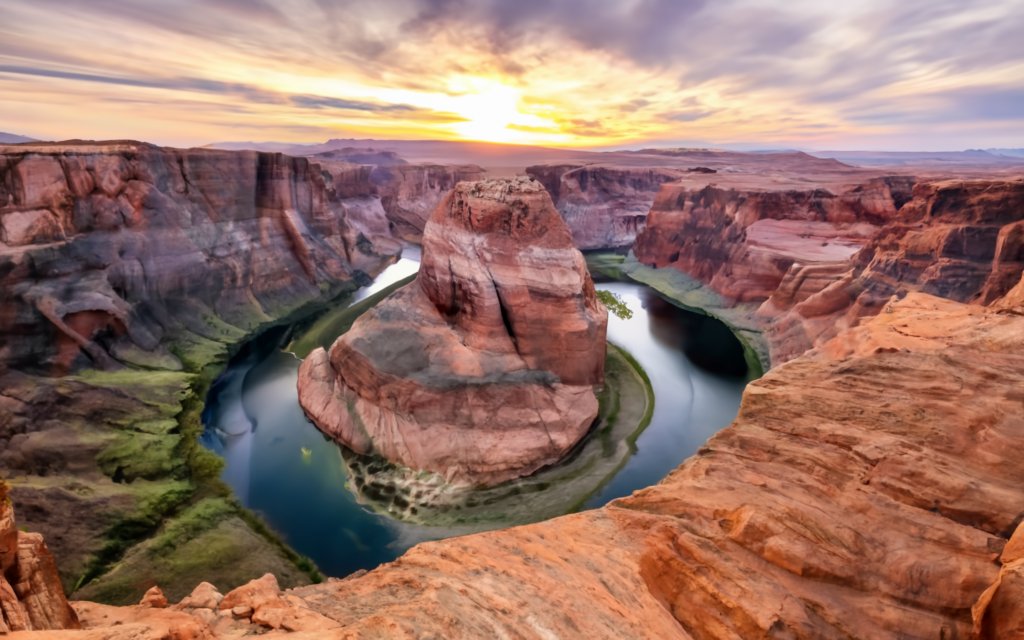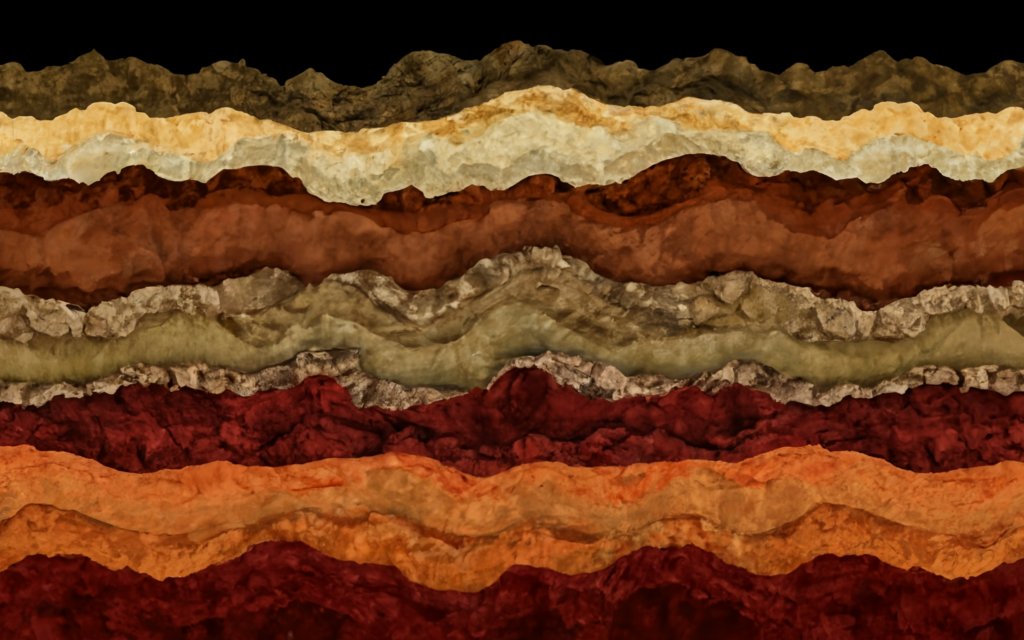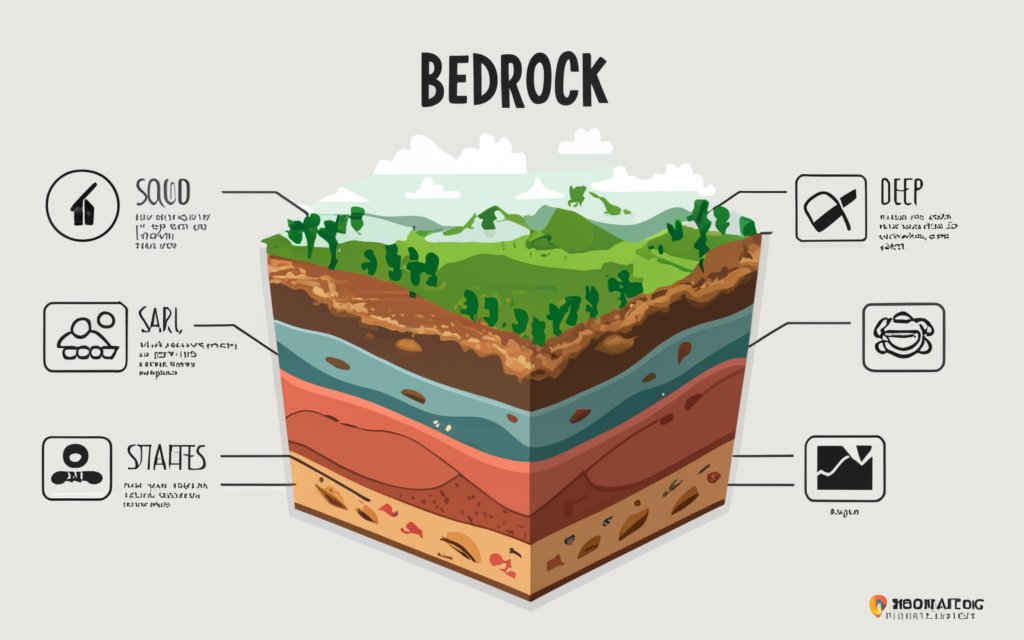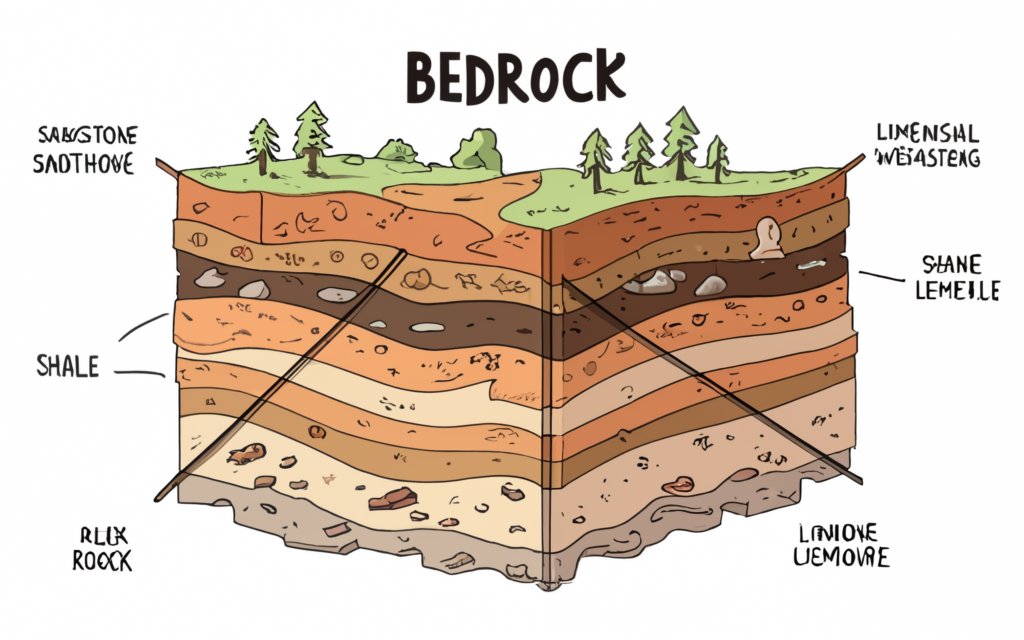
Certainly! Here’s a comprehensive overview on bedrock, including its definition, composition, and importance in geology:
Understanding Bedrock: Definition, Composition, and Importance in Geology
1. Definition of Bedrock:
Bedrock refers to the solid rock that lies beneath the loose material on the Earth’s surface, such as soil, sand, clay, or gravel. It forms the deep, solid foundation of the Earth’s crust and is crucial in shaping the landscape and influencing geological processes.

2. Composition of Bedrock:
Bedrock can be composed of various types of rock, including:
- Igneous Rocks: These form from the cooling and solidification of molten magma. Common examples include granite and basalt.
- Sedimentary Rocks: These develop from the accumulation and compression of sediments. Examples include limestone, sandstone, and shale.
- Metamorphic Rocks: These arise from the transformation of existing rocks due to heat, pressure, or chemically active fluids. Examples include marble (from limestone) and schist (from shale).
The specific composition of bedrock can vary widely depending on the geological history of the region and the processes that have acted upon it.
3. Importance in Geology:
Bedrock plays a critical role in several geological and environmental contexts:
- Foundation for Soil Formation: Bedrock influences the characteristics of the overlying soil. The type of bedrock can affect soil fertility, drainage, and structure.
- Landscape Formation: The weathering and erosion of bedrock contribute to the formation of landforms such as valleys, mountains, and plateaus. The type of bedrock can affect the rate and pattern of erosion.
- Resource Extraction: Bedrock is a source of valuable minerals and resources, including metals, fossil fuels, and construction materials. Understanding its composition helps in the exploration and extraction of these resources.
- Geological Studies: Studying bedrock provides insights into the Earth’s history, including tectonic movements, volcanic activity, and past climates. It helps geologists reconstruct past environments and predict geological hazards.

4. Interaction with Surface Materials:
Above the bedrock is typically an area of broken and weathered rock known as the regolith. This layer, along with soil, plays a role in supporting vegetation and influencing hydrological processes. The interaction between bedrock and these surface materials is crucial for understanding soil profiles, groundwater flow, and erosion patterns.
5. Practical Considerations:
In construction and civil engineering, knowledge of the bedrock is essential for designing stable foundations. Bedrock can impact the depth of excavation required and the overall stability of structures. For land-use planning and environmental management, understanding the bedrock can help assess risks related to natural hazards such as landslides or subsidence.
Conclusion:
Bedrock is a fundamental component of the Earth’s geology, providing a stable foundation beneath the more dynamic surface materials. Its composition and characteristics influence a wide range of geological and environmental processes, making it a key focus in geological studies and practical applications.

This overview should provide a detailed understanding of bedrock, its significance, and its implications in various fields.
Important Point
NO. | Important Points |
1. | |
2. | |
3. | |
4. |
FAQ: Understanding Bedrock
What exactly is bedrock?
Bedrock is the solid rock layer located beneath the loose material on the Earth’s surface, such as soil, sand, clay, or gravel. It forms the deep, stable foundation of the Earth’s crust.
What are the main types of bedrock?
Bedrock can be categorized into three main types:
Igneous Rocks: Formed from the solidification of molten magma (e.g., granite, basalt).
Sedimentary Rocks: Created from the accumulation and compression of sediments (e.g., limestone, sandstone, shale).
Metamorphic Rocks: Resulting from the transformation of existing rocks under heat and pressure (e.g., marble, schist).
Why is bedrock important in geology?
Bedrock is significant because it:
Supports Soil Formation: It influences the development and characteristics of the soil above it.
Shapes Landscapes: Weathering and erosion of bedrock contribute to landform creation, such as valleys and mountains.
Provides Resources: It is a source of minerals and materials used in construction and other industries.
Reveals Geological History: Studying bedrock helps geologists understand past geological events and predict future hazards.
How does bedrock affect surface materials?
The bedrock affects the properties of overlying materials, including:
Soil Characteristics: Influences soil fertility and drainage.
Erosion Patterns: Determines how and where erosion occurs.
Groundwater Flow: Affects the movement and availability of groundwater.
What role does bedrock play in construction and civil engineering?
In construction and civil engineering, bedrock knowledge is crucial for:
Foundation Stability: Ensuring that structures have a solid and reliable base.
Excavation Requirements: Determining the depth and extent of excavation needed.
Risk Assessment: Identifying potential issues such as landslides or subsidence.
How can understanding bedrock help in environmental management?
Understanding bedrock is vital for:
Soil and Water Management: Helps in managing soil stability and groundwater resources.
Natural Hazard Assessment: Aids in evaluating and mitigating risks associated with geological hazards.
See these too
- Read Also: Antimatter: Exploring the Mirror of Matter
- Read Also: Benthic: Exploring the Depths of Oceanic Life

Pingback: Understanding Biotic Factors: How Living Organisms Shape 1